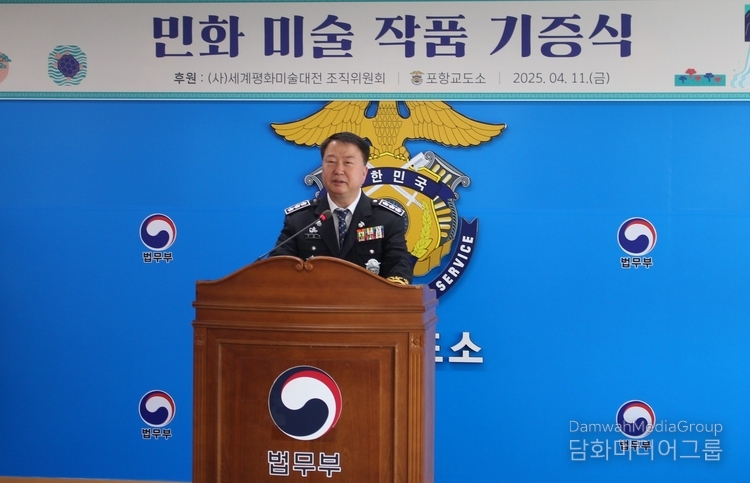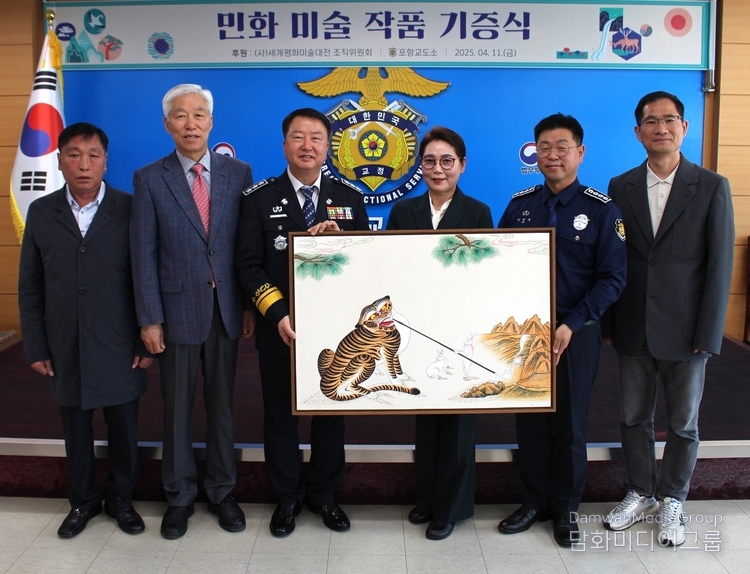By Diplomacy Journal Kayla Lee
A special art sharing event was held at Pohang Prison in Gyeongsangbuk-do Province on April 11. Thirty-two K-folk painting artists representing Korea donated 34 traditional folk paintings to help stabilize the emotions of the inmates and educate them.
The donation event was organized at the initiative of Lee Jon-young, chairman of the World Peace Art Exhibition Organizing Committee, and Kim Dong-hyun, Commissioner of the Daegu Regional Correctional Office, and was attended by major figures in the folk painting world, including Professor Lee Mi-hyung of Myongji University, artist Choi Byung-hwan, and artist Kang Seok-won.

“Art has the power to heal people's hearts, and we hope that this donation of folk painting works will help inmates cultivate their emotions and return to society in a healthy way,” said Kim Dong-hyun, Commissioner of Daegu Regional Correctional Office, in his greeting.
The donated folk paintings will be displayed in an exhibition space at Pohang Prison, where both correctional officials and inmates can enjoy the beauty and comfort of traditional Korean art. Folk painting has been used for centuries to convey the meaning of good fortune and longevity, and is recognized for its emotional healing effects.

“We are deeply grateful to each of the artists for donating their precious works,” said Lee Kyu-sung, the head of Pohang Prison. The enjoyment of high-quality traditional art will enrich the hearts of our inmates,” he said.
This is the fourth such donation following Uijeongbu Prison, Daegu Prison, and Daegu Detention Center, and is part of Chairman Lee's ongoing efforts to support correctional culture.

During the COVID-19 pandemic period, Chairman Lee donated 250,000 masks to correctional facilities across the country, and has been an example of continuous sharing and social responsibility.
“Art is a language that heals the heart and communicates with the world, and I hope this donation of folk paintings will bring hope and healing to inmates,” said Chairman Lee.
The exhibition is being recognized as a new initiative in correctional culture and is expected to be expanded to correctional facilities nationwide.
